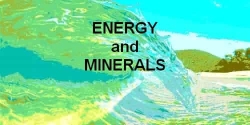Gemstone Names
Gemstone Names
geological environment
examples of geologic environments in which gemstones
are found
gemstones characteristics
mohs scale of hardness
the 16 mineral gemstone groups
beryl
chrysoberyl
corundum
diamond
feldspar
garnet
jade
lapis lazuli
opal
peridot
quartz
spinel
topaz
tourmaline
turquoise
zircon
Table of Additional Gemstone Names
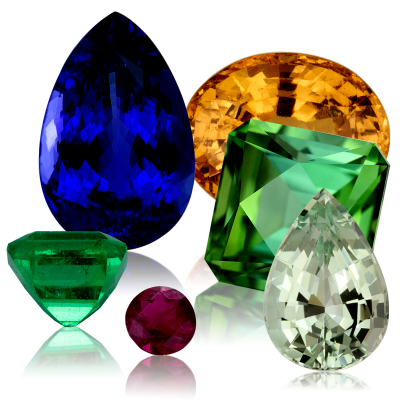
Geologic Environment
Gemstones are not plentiful. Gemstones do not form "ore" deposits in the normal sense.Gems, when present at all, tend to be scattered sparsely throughout a large body of rock or to have crystallized as small aggregates or fill veins and small cavities.Even stream gravel concentrations tend to be small--a few stones in each of several bedrock cracks, potholes, or gravel lenses in a stream bed.
The average grade of the richest diamond kimberlite pipes in Africa is about 1 part diamond in 40 million parts "ore." Kimberlite, a plutonic igneous rock, ascends from a depth of at least 100 kilometers (60 miles) to form a diatreme (narrow cone-shaped rock body or "pipe"). Moreover, because much diamond is not of gem quality, the average stone in an engagement ring is the product of the removal and processing of 200 to 400 million times its volume of rock.
Gemstones occur in most major geologic environments. Each environment tends to have a characteristic suite of gem materials, but many kinds of gems occur in more than one environment. Most gemstones are found in igneous rocks and alluvial gravels, but sedimentary and metamorphic rocks may also contain gem materials.
Examples of geologic environments in which gemstones are found:
Pegmatite--a coarse-grained intrusive igneous rock body, occurring as dikes (a tabular-shaped body), lenses, or veins in the surrounding rock.Stream gravels (placers)--deposits of heavier and more durable than average minerals that have been eroded out of the original rock. Often tourmaline, beryl, and many other gem-quality minerals have eroded out of the original rock in which they formed and have moved and been concentrated locally by water in streams. Sapphires in Judith Basin County, Montana, were first found when the gravels were worked for gold from 1895 to 1930.
Metamorphic rocks--rocks that have been altered by great heat, pressure, or both. Garnet, forexample, is commonly found as crystals in gneiss and mica schist.
Mineral Gemstones Characteristics
Hardness and specific gravity are two of the major characteristics of gemstones. Hardness of a gemstone is its resistance to scratching and may be described relative to a standard scale of 10 minerals known as the Mohs scale. F. Mohs, an Austrian mineralogist, developed this scale in 1822.According to
Mohs' scale of hardness
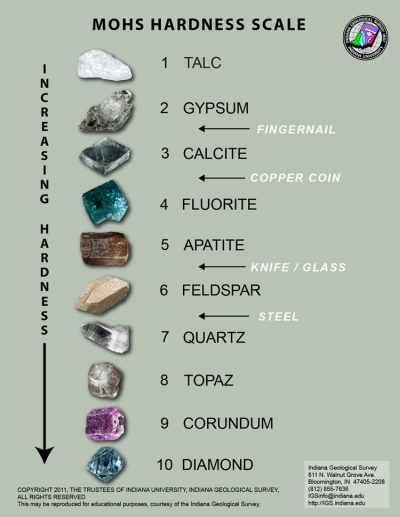
Specific gravity is the number of times heavier a gemstone of any volume is than an equal volume ofwater; in other words, it is the ratio of the density of the gemstone to the density of water.
The 16 mineral gemstone groups
The 16 mineral gemstone groups listed below are highly prized for their beauty, durability,and rarity:
Beryl(hardness: 7.5-8 Mohs)

The Beryl species is famous for its most notable member, emerald. But the beryl family also includes aquamarine, morganite, golden beryl and bixbite.
All of the beryls are aluminum beryllium silicates, and have a hardness of 7.5 to 8 on the Mohs scale.
The different varieties of beryl are distinguished by their color, but they differ significantly in their transparency and clarity as well.
For example, where emerald tends to be heavily included, aquamarine and golden beryl will usually have excellent transparency and clarity.
Beryllium aluminum silicate Specific gravity: 2.63-2.91
Emerald: Intense green or bluish green
Aquamarine: Greenish blue or light blue
Morganite: Pink, purple pink, or peach
Heliodore: Golden yellow to golden green
Red beryl: Raspberry red Goshenite: Colorless, greenish yellow, yellow green, brownish
Chrysoberyl(hardness: 8.5 Mohs)
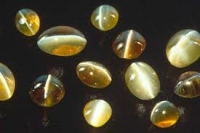
Chrysoberyl was was first discovered in 1789 and since then, it has become one of the most important and valuable gemstone groups.
It was formerly referred to as 'chrysolite', a historical name essentially describing any greenish-golden to olive colored gemstone.
The chrysoberyl group is perhaps most famous for its cat's eye gemstone variety, but the rarest and most valuable chrysoberyl is alexandrite - a highly desirable chromium-rich color change variety of chrysoberyl.
Beryllium aluminum oxide Specific gravity: 3.68-3.78
Chrysoberyl: transparent yellowish green to greenish yellow and pale brown
Alexandrite: red in incandescent light and green in daylight
Cat's eye: usually yellowish or greenish
Corundum(hardness: 9 Mohs)

The corundum species includes two of the most important colored gemstones: ruby and sapphire.
Famous for their excellent hardness (9 on the Mohs scale) and rarity, ruby and sapphire share both a common chemical composition (aluminum oxide) and a crystal structure (trigonal).
The main difference is color: ruby is red corundum, while all other corundum colors are classified as sapphire.
Aluminum oxide Specific gravity: 3.96-4.05
Ruby: Intense red
Sapphire: Blue
Diamond(hardness: 10 Mohs)
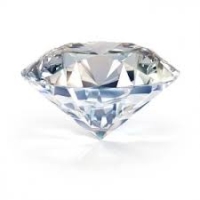
Carbon Specific gravity: 3.51
Colorless to faint yellowish tinge, also variable
Feldspar(hardness: 6-6.5 Mohs)
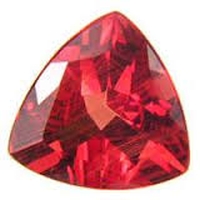
Feldspar makes up nearly 60% of the earth's crust. Feldspar is a group of minerals distinguished by the presence of aluminum and the silica ion in their chemistry.
There are two main subgroups of feldspar that produce gem-quality material:
the potassium feldspars and the plagioclases, a series that ranges from calcium to sodium feldspars.
Among the well-known feldspar gemstones are moonstone, orthoclase, amazonite, andesine, labradorite and sunstone. Amazonite, moonstone and orthoclase are all potassium feldspars.
They have a hardness of 6 to 6.5 on the Mohs scale, and a vitreous luster. Moonstone also exhibits a unique shimmer known as adularescence.
Labradorite, andesine and sunstone are plagioclases feldspars. Like the potassium feldspars, they have a hardness of 6 to 6.5, but they tend to have slightly higher refractive indices, ranking between beryl and quartz.
Two distinctly different alkali alumino silicates: the Plagioclase and the Alkali Feldspar Series Specific gravity: 2.55-2.76
Plagioclase Series-
Labradorite: Colorful, iridescent, also transparent stones in yellow, orange, red, and green Sunstone: Gold spangles from inclusions of hematite
Peristerite: Blue white iridescence
Alkali Feldspar Group-
Orthoclase:Pale yellow, flesh red Amazonite: Yellow green to greenish blue
Moonstone: Colorless; also white to yellowish, and reddish to bluish gray
Garnet(hardness: 6.5-7.5 Mohs)
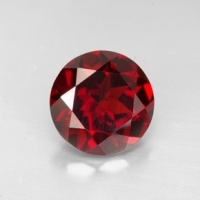
he garnets are a large group of differently colored minerals with similar crystal structure and related chemical compositions.
Garnet has historically been highly regarded for its very good hardness (7-7.5 on the Mohs scale) and great brilliance.
The garnet family includes the inexpensive red garnets, almandine and pyrope, as well as some rarer varieties.
The premium garnets include the red-orange spessartite, the green tsavorite and demantoid, and the purple-red rhodolite.
A group of silicate minerals Specific gravity: 3.5-4.3
Almandine: Orangy red to purplish red
Almandine-spessartine: Reddish orange
Andradite: Yellowish green to orangy yellow to black
Demantoid: Green to yellow green andradite
Topazolite: Yellow to orangy yellow
Grossular: Colorless; also orange, pink, yellow, and brown
Tsavorite: Green to yellowish green
Hessonite: Yellow orange to red Pyrope: Colorless; also pink to red
Chrome pyrope: Orange red
Pyrope-Almadine: Reddish orange to red purple
Pyrope-Spessartine: Greenish yellow to purple
Malaia: Yellowish to reddish orange to brown
Color-change garnet: Blue green in daylight to purple red in incandescent light
Rhodolite: Purplish red to red purple
Spessartine: Yellowish orange
Uvarovite: Emerald green
Jade(hardness: 6 Mohs)

Jade has been known and treasured for more than 7,000 years. But only in 1863 was it discovered that jade is actually not a single mineral.
What was traditionally called jade is in fact two separate and distinct minerals: jadeite and nephrite.
Nephrite is the more common form of jade. Nephrite ranges in color from mid to dark green or grey-green, but it can also be white, yellowish or reddish. Nephrite is slightly softer than jadeite; nephrite is 6-6.5 on the Mohs scale, while jadeite is 6.5-7. They have quite different chemical compositions as well: nephrite is a calcium magnesium iron silicate while jadeite is a sodium aluminum silicate. The two minerals also have different densities.
Jadeite has a density of 3.30-3.38 while nephrite is less dense at 2.90-3.03. The two varieties of jade even have different crystal structures. While jadeite's structure is an arrangement of grainy crystals, nephrite is made up of fibrous crystals that interlock in a matted texture. These densely packed and interwoven fibers are extremely resistant to fracturing. So while jadeite is the denser and harder jade, nephrite is actually the tougher of the two
Nephrite Calcium magnesium silicate
Specific gravity: 2.9-3.1
White, deep green, creamy brown
Jadeite
Sodium aluminum silicate Specific gravity: 3.1-3.5
White, leafy and blue green, emerald green, lavender, dark blue green and greenish black, deep emerald-green
Lapis lazuli(hardness: 5-5.5 Mohs)
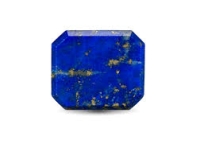
It has been mined from Afghanistan since the early 7th millennium BC, usually forms in crystalline marble through the geological process of contact metamorphism and due to its composition, it is technically defined as a rock rather than a mineral. It is primarily composed of lazurite, while the remaining composition is made up of sodalite, calcite, pyrite and other various minor constituents.
A rock composed mainly of the mineral lazurite with variable amounts of pyrite (brassy flecks) and white calcite
Specific gravity: 2.7-2.9
Deep blue, azure blue, greenish blue (bluish color with flecks of white and gold)
Opal(hardness: 5.5-6.5 Mohs)

The opal species has three subgroups:
the precious opals,
the yellow-red fire opals,
and
the common opals.
The precious opals are distinguished by their unique play of color, a display of rainbow-lie hues which changes with the angle of observation.
The fire opals, named for their orange color, usually show no play of color. Most fire opals are milky and turbid, but especially fine qualities are clear and transparent.
The common opals are opaque to translucent and display no play of color; colors range from white to yellow to brown.
Opals are unusual in that they are amorphous -- having no crystal structure -- and always contain water (from 3 to 30 percent).
Hydrated silica Specific gravity: 1.98-2.25
White opal: Opaque, porcelain-like white material; colors resemble flashes or speckles
Black opal: Flashes and speckles appear against black background
Water opal: A transparent, colorless opal is the background for brilliant flashes of color
Fire opal: Reddish or orange opal
Peridot [Olivine](hardness: 7 Mohs)
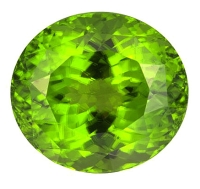
A tiny island known as Zabargard (off Egypt) is documented as the first source of peridot, dating back as far as four thousand years.
Early Crusaders who visited St. John's Island (now called Zabargard) introduced this gem to Europe upon return from battle.
Peridot is mentioned in many ancient references as chrysolite.
Magnesium iron silicate Specific gravity: 3.22-3.45
Olive to lime green
Quartz(hardness: 7 Mohs)
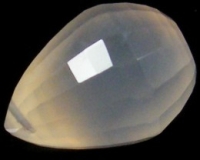
Quartz is the second most common mineral on earth, making up about 12% of the earth's crust. Only feldspar is more common.
There are two different branches of the quartz family.
Macrocrystalline quartz includes rock crystal, amethyst, citrine, smoky quartz, rose quartz and tiger's eye. Macrocrystalline quartz, as the name suggests, has large crystals which can be distinguished by the naked eye. This type of quartz is mainly transparent to translucent, with a vitreous luster.
The other type of quartz is known as cryptocrystalline quartz. It has microscopically (or submicroscopically) small crystals and is usually translucent to opaque, with a waxy to greasy or dull luster. This kind of quartz has fibrous and granular subcategories. The fibrous varieties are known under the name chalcedony, but this name covers a large variety of stones, including agate, jasper, bloodstone, carnelian and chrysocolla
Silicon dioxide or silica Specific gravity: 2.65
Coarsely crystalline varieties of silica-
Rock crystal: Colorless
Amethyst: Purple
Citrine: Yellow to amber
Morion: Black
Smoky quartz or cairngorm: smoky gray to brown
Rose quartz: Translucent pink Green quartz or praziolite: Green
Cryptocrystalline varieties of silica-
Chalcedony and Jasper (variable)
Agate: Bull's eye agate, Iris or fire agate, Onyx, Sardonyx. Bloodstone or heliotrope. Carnelian.
Chrysoprase. Moss agate. Plasma. Prase. Sard. Jasper.
Spinel(hardness: 8 Mohs)

Spinel is an important group of gemstones that for centuries was mistaken for ruby.
It can occur in a variety of colors and is one of the few singly-refractive gemstones available today.
Spinel gems have excellent hardness and durability and are never treated or enhanced. Fine red spinel is even rarer than red ruby and is often considered more valuable.
Magnesium aluminum oxide Specific gravity: 3.58-4.06
Balas ruby: Red
Almandine spinel: Purple red
Rubicelle: Orange
Sapphire spinel and ghanospinel: Blue
Chlorspinel : Green
Topaz(hardness: 8 Mohs)
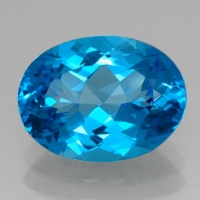
Topaz is a very important group of gemstones that are popularly used for commercial jewelry. Its history dates back over 2,000 years.
The topaz group is most famous for its attractive and vivid blue colored variety, but topaz can actually occur in a variety of other colors - some extremely rare, including red, pink, light-green, violet, yellow and orange.
Topaz in its purest form is white or colorless and often used as a substitute for diamond. Most topaz gemstones are heated or enhanced, but many rare and valuable topaz gemstones are untreated.
Aluminum silicate fluoride hydroxide Specific gravity: 3.5-3.6
Wine yellow, pale blue, green, violet, or red
Tourmaline(hardness: 7-7.5 Mohs)
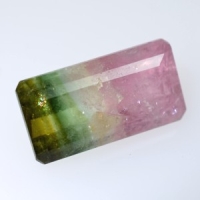
Tourmaline is one of the most versatile gemstone groups and includes a number of species and gemstone varieties.
In mineralogy, the major tourmaline species based on chemical composition include dravite, uvite, schorl, liddicoatite and elbaite.
Schorl is most common and is black to near-black in color. Tourmaline gemstones are especially popular for mainstream jewelry.
Most tourmaline gemstones display distinctly different colors in the same crystal.
Like sapphire, tourmaline is often traded using descriptive names such as 'yellow tourmaline' or 'pink tourmaline' to market fancy-colored varieties of tourmaline gemstones.
Complex aluminum borosilicate (Elbaite, Dravite, Uvite)
Specific gravity: 3.03-3.25
Achorite: Colorless
Brazilian emerald : Green
Dravite: Brown Indicolite: Dark blue
Rubellite: Pink to red
Siberite: Violet
Verdilite: Green
Turquoise(hardness: 5-6 Mohs)

Turquoise was among the first gems to be mined, and many historic sites have been depleted, though some are still worked to this day.
These are all small-scale operations, often seasonal owing to the limited scope and remoteness of the deposits.
Most are worked by hand with little or no mechanization.
Hydrous copper aluminum phosphate Specific gravity: 2.6-2.8
Sky blue; greenish blue
Zircon(hardness: 7.5 Mohs)
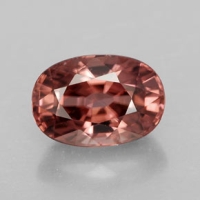
Zircon is too often confused with cubic zirconia, an artificial diamond stimulant. However, zircon is a completely natural group of gemstones with an ancient history that dates back over 4 billion years. The most famous and valuable zircon is blue zircon, but its range of colors also include colorless, green, dark-red, violet, yellow, brown and orange. Like sapphire, zircon is often traded using color-specific names, such as blue zircon, golden zircon and white zircon. There are also some trade names used today for specific colored zircon.
Zirconium silicate Specific gravity: 4.6-4.7
Jargon: Variable
Matura diamond: Colorless
Hyacinth: Yellow, orange, red, brown
Table of Additional Gemstone Names
| Group | Species | Mohs Hardness | Variety/Trade Names |
|---|---|---|---|
| Actinolite | 5 - 6 | Cat's eye | |
| Alabaster | 2 - 2-1/2 | Satinspar (fibrous gypsum, often chatoyant), selenite | |
| Amber | 2 - 2-1/2 | Amber (baltic, dominican, etc.) | |
| Ammonite | Variable | Ammolite, korite, calcentine (name for iridescent Canadian material) | |
| Andalusite | 7 - 7-1/2 | Chiastolite, viridine | |
| Apatite | 5 | Cat's eye apatite, asparagus stone (green), teal, green and other colors | |
| Aragonite | 3-1/2 - 4 | By color (yellow, brown, white, gray, green, blue, other colors) | |
| Azurite | 3-1/2 - 4 | Chessy copper, azure stone | |
| Azurmalachite | 3-1/2 - 4 | Rock composed of azurite and malachite | |
| Beryl | 7-1/2 - 8 | Emerald, aquamarine, goshenite, bixbite, heliodor, morganite, maxixe beryl | |
| Calcite | 3 | Iceland spar, marble, onyx marble, satinspar (fibrous aggregate, often chatoyant--the name is also used for a similar variety of gypsum) | |
| Chalcedony | 6-1/2 - 7 | Milky chalcedony, chrysoprase, carnelian, bloodstone (heliotrope), agate, moss agate, onyx, jasper, fire agate, dendritic agate, petrified wood, agatized wood | |
| Charoite | 5 - 6 | None | |
| Chrysoberyl | 8-1/2 | Alexandrite, cat's eye alexandrite, cat's eye (semi transparent-semitranslucent yellow-yellowish green, grayish green, brown to brownish yellow) | |
| Coral (organic material) | 3-1/2 - 4 | Different colors | |
| Corundum | 9 | Ruby, star ruby, sapphire (different colors), star sapphire (different colors) | |
| Diamond | 10 | Colorless--fancy colors | |
| Diopside | 5-1/2 - 6 | Star diopside, cat's eye diopside, chrome diopside, malacolie, alalite, violane | |
| Feldspar | Microline feldspar | 6 - 6-1/2 | Amazonite (or Amazon stone) |
| Orthoclase feldspar | 6 - 6-1/2 | Moonstone (different colors) | |
| Plagioclase feldspar | 6 - 6-1/2 | Labradorite (different colors), sunstone, rainbow moonstone is a trade name for transparent-semitranslucent white-grayish labradorite with multicolored labradorescence) | |
| Fluorite | 4 | Multicolored, blue John (bluish violet to purple on a reddish to colorless background) | |
| Garnet | Almandite garnet | 7 - 7-1/2 | Reddish orange to red, star almandite |
| Andradite garnet | 6-1/2 - 7 | Demantoid, melanite, topazolite | |
| Grossularite garnet | 7 - 7-1/2 | Hessonite, tsavorite | |
| Pyrope garnet | 7 - 7-1/2 | Medium to dark reddish garnet | |
| Rhodolite garnet | 7 - 7-1/2 | Transparent, purplish red through reddish purple | |
| Spessarite garnet | 7 - 7-1/2 | Transparent yellowish orange to reddish orange | |
| Color change garnets | 7 - 7-1/2 | Malaia (light to dark--pinkish orange, reddish orange, yellowish orange) | |
| Natural glass | 5 - 5-1/2 | Moldavite, obsidian (sheen, snowflake, rainbow), tektites | |
| Hematite | 5-1/2 - 6-1/2 | None | |
| Hemimorphite | 4-1/2 - 5 | None | |
| Howlite | 3 - 3-1/2 | None | |
| Idocrase (also known as vesuvianite) | 6-1/2 | Californite, xanthite, cyprine | |
| Iolite | 7 - 7-1/2 | Dichroite, bloodshot iolite | |
| Jadeite Jade | 6-1/2 - 7 | Imperial jade, yunnan jade, moss in snow | |
| Nephrite Jade | 6 - 6-1/2 | Depending on color--mutton fat, tomb jade, chicken bone, spinach jade | |
| Kyanite | 4 - 7-1/2 | None | |
| Lapis Lazuli | 5 - 6 | Depending on color/mine--Persian or Afghan, Russian, Chilean | |
| Malachite | 3-1/2 - 4 | Also known as peacock stone | |
| Opal | 5 - 6-1/2 | White opal, black opal, fire opal, boulder opal, common opal, milky opal, onyx opal, wax opal, moss opal, etc. | |
| Pearl | 2-1/2 - 4 | Natural, freshwater pearl (multiple colors) | |
| Pectolite | 4-1/2 - 5 | Larimar | |
| Peridot | 6-1/2 - 7 | Chrysolite (used primarily in Europe) | |
| Pyrite | 6 - 6-1/2 | None | |
| Quartz | 7 | Amethyst, citrine, tigereye, rock crystal, smoky quartz, rose quartz, aventurine quartz, rainbow or iris quartz, rutilated quartz, sagenitic quartz, dumortierite quartz, milky quartz, green quartz, quartzite, tourmalinated quartz, etc. | |
| Rhodochrosite | 3-1/2 - 4-1/2 | None | |
| Rhodonite | 5-1/2 - 6-1/2 | None | |
| Serpentine | 2-1/2 - 6 | Bowenite, williamsite, verd antique | |
| Shell | 3-1/2 | Mother-of-pearl shell, helmut shell, etc. | |
| Sodalite | 5 - 6 | Sometimes called as Canadian blue stone, hackmanite (pink--fades rapidly) | |
| Spinel | 8 | Multicolored, flame spinel 9 (orange-red), color change spinel, star spinel, ceylonite (black) | |
| Spodumene | 6-1/2 - 7 | Kunzite, hiddenite, triphane | |
| Sugilite | 6-1/2 - 7-1/2 | Royal azel, royal lavulite | |
| Topaz | 8 | Sherry topaz, london topaz, imperial topaz, etc. | |
| Tourmaline | 7 - 7-1/2 | Rubellite, dravite, verdelite, parti-colored, chrome tourmaline, multicolored, black tourmaline (or schorl) | |
| Turquoise | 5 - 6 | Depending on color, mine source--Persian, American or Mexian, Sleeping Beauty, spiderweb, etc. | |
| Unakite | 6 - 7 | None | |
| Zircon | 6 - 7-1/2 | Colorless to multicolored | |
| Zoisite | 6 - 7 | Tanzanite, ruby in zoisite, thulite |

